Saint Francis Xavier

(1506-1552)

Who Was Saint Francis Xavier?
With encouragement from his friend Ignatius of Loyola, Saint Francis Xavier devoted himself to religious service and became one of the founders of the Jesuit order. Much of his life was spent tending to missions in areas such as India and Japan. He was 46 when he died on China's Shangchuan Island on December 3, 1552.
On April 7, 1506, Francis Xavier was born in Xavier Castle, located near Sangüesa, in the kingdom of Navarre (part of present-day Spain). He was a member of a noble family, and his childhood was one of privilege—however, it was disrupted by his father's death, as well as by outside efforts to take control of Navarre.
Forming the Jesuit Order
In 1525, Xavier went to study at the University of Paris. There, he encountered Ignatius of Loyola, who had experienced a religious conversion while recovering from a war wound. Loyola did his utmost to convince Xavier to join him on the same path of devotion.
Though at first hesitant, Xavier was eventually inspired by his friend's example. On August 15, 1534, in the Montmartre section of Paris, Xavier, Loyola and five others pledged themselves to the Society of Jesus (the Jesuits). In addition to vows of celibacy and poverty, they also promised to visit the Holy Land.
While waiting in Venice, Italy, to depart for the Holy Land, Xavier worked in a hospital, aiding those in need. He also became a priest, on June 24, 1537. When fighting between Venice and the Ottoman Empire made a trip to Jerusalem impossible, Xavier instead went to Rome, where he and others in the society offered their services to the pope.
Missionary Work
Impressed by the Jesuits, King John III of Portugal asked the order for missionaries to work in his empire. Though Loyola initially selected others for the task, Xavier stepped in when a fellow priest became ill. He left Rome on March 15, 1540.
Xavier arrived in Goa, India, on May 6, 1542. He came to be admired in that country for his ability to live and work side by side with the poor. Seeking more converts, Xavier continued to travel; his stops included Ceylon, the Molucca Islands, the Banda Islands and the Malay Peninsula.
On August 15, 1549, Xavier landed at Kagoshima, Japan. As he had at his other missions, Xavier adapted to local mores and arranged for the translation of religious texts. These steps helped him reach more converts in the year and a half he spent in Japan.
Last Mission, Death and Legacy
Xavier's next focus for missionary work was China. He traveled to Sancian (Shangchuan) Island, near Canton, but was not able to access the mainland because borders had been closed to foreigners. Before he could find a way inside the country, illness incapacitated Xavier. He died on the island on December 3, 1552, at the age of 46. His body was then taken to Goa.
Though he passed away at a relatively young age, Xavier had accomplished much in his life. In addition to being a founding member of the Jesuit order—the Society of Jesus was officially recognized by Pope Paul III in 1540—he baptized an estimated 30,000 people. Xavier was beatified by Pope Paul V in 1619, and canonized by Pope Gregory XV in 1622. A famed missionary himself, he is now the patron saint of missionaries.
QUICK FACTS
- Name: Francis Xavier
- Birth Year: 1506
- Birth date: April 7, 1506
- Birth City: Xavier Castle, near Sangüesa, Navarre
- Birth Country: Spain
- Gender: Male
- Best Known For: The patron saint of missionaries and one of the founders of the Jesuit order, Saint Francis Xavier sought religious converts throughout Asia during the 1500s.
- Christianity
- Astrological Sign: Aries
- Nacionalities
- Interesting Facts
- Saint Francis Xavier was one of the founding members of the Jesuit order.
- Death Year: 1552
- Death date: December 3, 1552
- Death City: Sancian Island
- Death Country: China
CITATION INFORMATION
- Article Title: Saint Francis Xavier Biography
- Author: Biography.com Editors
- Website Name: The Biography.com website
- Url: https://www.biography.com/religious-figures/saint-francis-xavier
- Access Date:
- Publisher: A&E; Television Networks
- Last Updated: April 19, 2021
- Original Published Date: April 2, 2014
- In this life, we find our greatest comfort living in the midst of danger, that is, if we confront them solely for the love of God.
- I remember not ever to have tasted such interior delights; and these consolations of the soul are so pure, so exquisite, so perpetual, that they take from me all sense of my corporeal sufferings.
Watch Next .css-16toot1:after{background-color:#262626;color:#fff;margin-left:1.8rem;margin-top:1.25rem;width:1.5rem;height:0.063rem;content:'';display:-webkit-box;display:-webkit-flex;display:-ms-flexbox;display:flex;}

Famous Religious Figures

7 Little-Known Facts About Saint Patrick
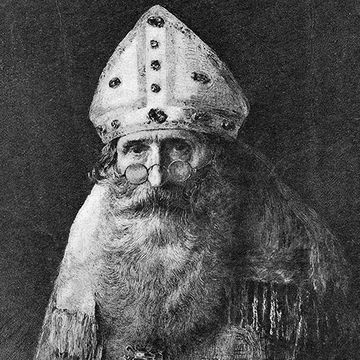
Saint Nicholas

Jerry Falwell

Bhagwan Shree Rajneesh

Saint Thomas Aquinas
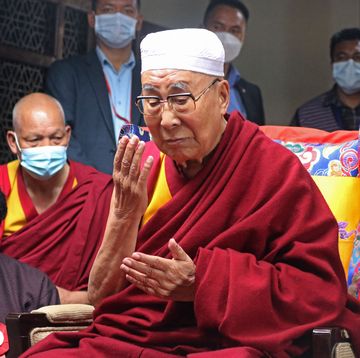
History of the Dalai Lama's Biggest Controversies
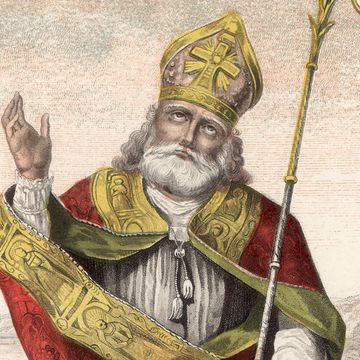
Saint Patrick

Pope Benedict XVI
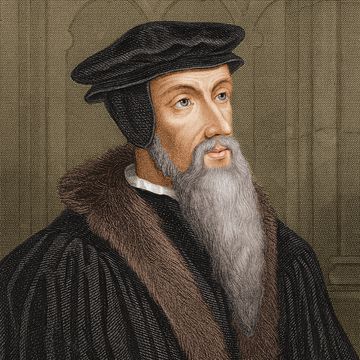
John Calvin
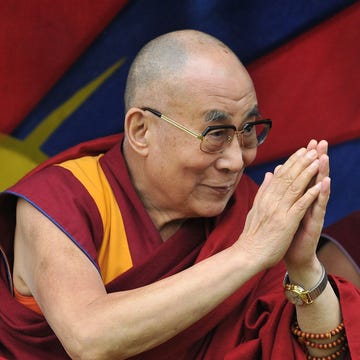
Pontius Pilate

- Catholicism
- Religious Catalogue
- Give Monthly
- 1-800-447-3986
- [email protected]
- See of Peter
- Daily Mass and Readings
- Seasons and Feast Days
- Traditional Latin Mass
- Prayer Requests
- EWTN News Nightly
- EWTN Pro-Life Weekly
- EWTN News In Depth
- The World Over
- National Catholic Register
- Catholic News Agency
- Weekly Schedule
- Channel Finder
- Listen Live
- Audio Archive
- Monthly Schedules
- Podcast Central
- Galaxy 33 Transmission Plan
- SW Frequency Guide
- SW Monitoring Form
- Frequently Asked Questions
- EWTN Religious Catalogue
- My Giving Account
- Ways to Give
- Mother Angelica
- Online Learning Series
- EWTN Everywhere
- Media Missionaries
- Privacy Policy
- International Satellite Feeds
St. Francis Xavier

Born in the Castle of Xavier near Sanguesa, in Navarre, 7 April, 1506; died on the Island of Sancian near the coast of China, 2 December, 1552. In 1525, having completed a preliminary course of studies in his own country, Francis Xavier went to Paris, where he entered the college de Sainte-Barbe. Here he met the Savoyard, Pierre Favre, and a warm personal friendship sprang up between them. It was at this same college that St. Ignatius Loyola, who was already planning the foundation of the Society of Jesus, resided for a time as a guest in 1529. He soon won the confidence of the two young men; first Favre and later Xavier offered themselves with him in the formation of the Society. Four others, Lainez, Salmeron, Rodriguez, and Bobadilla, having joined them, the seven made the famous vow of Montmartre, 15 Aug., 1534.
After completing his studies in Paris and filling the post of teacher there for some time, Xavier left the city with his companions 15 November, 1536, and turned his steps to Venice, where he displayed zeal and charity in attending the sick in the hospitals. On 24 June, 1537, he received Holy orders with St. Ignatius. The following year he went to Rome, and after doing apostolic work there for some months, during the spring of 1539 he took part in the conferences which St. Ignatius held with his companions to prepare for the definitive foundation of the Society of Jesus. The order was approved verbally 3 September, and before the written approbation was secured, which was not until a year later, Xavier was appointed , at the earnest solicitation of the John III, King of Portugal, to evangelize the people of the East Indies. He left Rome 16 March, 1540, and reached Lisbon about June. Here he remained nine months, giving many admirable examples of apostolic zeal.
On 7 April, 1541, he embarked in a sailing vessel for India, and after a tedious and dangerous voyage landed at Goa, 6 May, 1542. The first five months he spent in preaching and ministering to the sick in the hospitals. He would go through the streets ringing a little bell and inviting the children to hear the word of God. When he had gathered a number, he would take them to a certain church and would there explain the catechism to them. About October, 1542, he started for the pearl fisheries of the extreme southern coast of the peninsula, desirous of restoring Christianity which, although introduced years before, had almost disappeared on account of the lack of priests. He devoted almost three years to the work of preaching to the people of Western India, converting many, and reaching in his journeys even the Island of Ceylon. Many were the difficulties and hardships which Xavier had to encounter at this time, sometimes on account of the cruel persecutions which some of the petty kings of the country carried on against the neophytes, and again because the Portuguese soldiers, far from seconding the work of the saint, retarded it by their bad example and vicious habits.
In the spring of 1545 Xavier started for Malacca. He laboured there for the last months of that year, and although he reaped an abundant spiritual harvest, he was not able to root out certain abuses, and was conscious that many sinners had resisted his efforts to bring them back to God. About January, 1546, Xavier left Malacca and went to Molucca Islands, where the Portuguese had some settlements, and for a year and a half he preached the Gospel to the inhabitants of Amboyna, Ternate, Baranura, and other lesser islands which it has been difficult to identify. It is claimed by some that during this expedition he landed on the island of Mindanao, and for this reason St. Francis Xavier has been called the first Apostle of the Philippines. But although this statement is made by some writers of the seventeenth century, and in the Bull of canonization issued in 1623, it is said that he preached the Gospel in Mindanao, up to the present time it has not been proved absolutely that St. Francis Xavier ever landed in the Philippines.
By July, 1547, he was again in Malacca. Here he met a Japanese called Anger (Han-Sir), from whom he obtained much information about Japan. His zeal was at once aroused by the idea of introducing Christanity into Japan, but for the time being the affairs of the Society demanded his presence at Goa, whither he went, taking Anger with him. During the six years that Xavier had been working among the infidels, other Jesuit missionaries had arrived at Goa, sent from Europe by St. Ignatius; moreover some who had been born in the country had been received into the Society. In 1548 Xavier sent these missionaries to the principal centres of India, where he had established missions, so that the work might be preserved and continued. He also established a novitiate and house of studies, and having received into the Society Father Cosme de Torres, a Spanish priest whom he had met in the Maluccas, he started with him and Brother Juan Fernandez for Japan towards the end of June, 1549. The Japanese Anger, who had been baptized at Goa and given the name of Pablo de Santa Fe, accompanied them.
They landed at the city of Kagoshima in Japan, 15 Aug., 1549. The entire first year was devoted to learning the Japanese language and translating into Japanese, with the help of Pablo de Santa Fe, the principal articles of faith and short treatises which were to be employed in preaching and catechizing. When he was able to express himself, Xavier began preaching and made some converts, but these aroused the ill will of the bonzes, who had him banished from the city. Leaving Kagoshima about August, 1550, he penetrated to the centre of Japan, and preached the Gospel in some of the cities of southern Japan. Towards the end of that year he reached Meaco, then the principal city of Japan, but he was unable to make any headway here because of the dissensions the rending the country. He retraced his steps to the centre of Japan, and during 1551 preached in some important cities, forming the nucleus of several Christian communities, which in time increased with extraordinary rapidity.
After working about two years and a half in Japan he left this mission in charge of Father Cosme de Torres and Brother Juan Fernandez, and returned to Goa, arriving there at the beginning of 1552. Here domestic troubles awaited him. Certain disagreements between the superior who had been left in charge of the missions, and the rector of the college, had to be adjusted. This, however, being arranged, Xavier turned his thoughts to China, and began to plan an expedition there. During his stay in Japan he had heard much of the Celestial Empire, and though he probably had not formed a proper estimate of his extent and greatness, he nevertheless understood how wide a field it afforded for the spread of the light of the Gospel. With the help of friends he arranged a commission or embassy the Sovereign of China, obtained from the Viceroy of India the appointment of ambassador, and in April, 1552, he left Goa. At Malacca the party encountered difficulties because the influential Portuguese disapproved of the expedition, but Xavier knew how to overcome this opposition, and in the autumn he arrived in a Portuguese vessel at the small island of Sancian near the coast of China. While planning the best means for reaching the mainland, he was taken ill, and as the movement of the vessel seemed to aggravate his condition, he was removed to the land, where a rude hut had been built to shelter him. In these wretched surroundings he breathed his last.
It is truly a matter of wonder that one man in the short space of ten years (6 May, 1542-2 December, 1552) could have visited so many countries, traversed so many seas, preached the Gospel to so many nations, and converted so many infidels. The incomparable apostolic zeal which animated him, and the stupendous miracles which God wrought through him, explain this marvel, which has no equal elsewhere. The list of the principal miracles may be found in the Bull of canonization. St. Francis Xavier is considered the greatest missionary since the time of the Apostles, and the zeal he displayed, the wonderful miracles he performed, and the great number of souls he brought to the light of true Faith, entitle him to this distinction. He was canonized with St. Ignatius in 1622, although on account of the death of Gregory XV, the Bull of canonization was not published until the following year.
The body of the saint is still enshrined at Goa in the church which formerly belonged to the Society. In 1614 by order of Claudius Acquaviva, General of the Society of Jesus, the right arm was severed at the elbow and conveyed to Rome, where the present altar was erected to receive it in the church of the Gesu.


- Saint of the Day
Saint Francis Xavier
- Franciscan Media
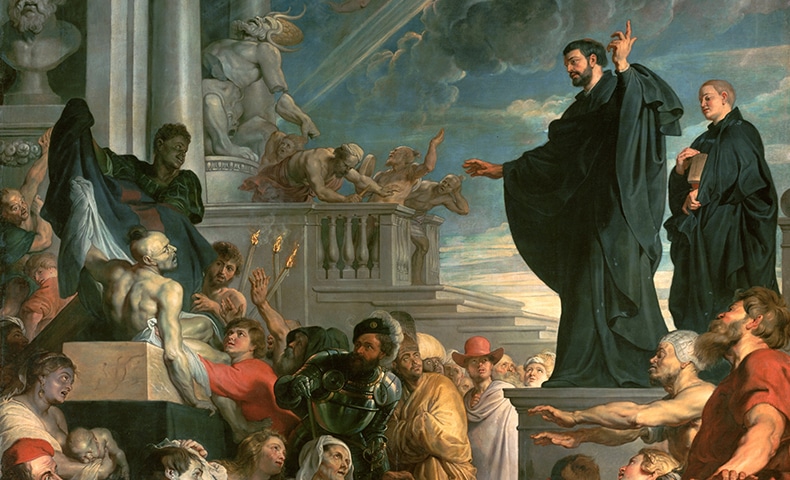
Image: The miracles of St. Francis Xavier Peter Paul Rubens | photo by mAG-VIH-g-_RNA at Google Cultural Institute
Saint of the day for december 3, (april 7, 1506 – december 3, 1552).
Saint Francis Xavier’s Story
Jesus asked, “What profit would there be for one to gain the whole world and forfeit his life?” (Matthew 16:26a). The words were repeated to a young teacher of philosophy who had a highly promising career in academics, with success and a life of prestige and honor before him.
Francis Xavier, 24 at the time, and living and teaching in Paris, did not heed these words at once. They came from a good friend, Ignatius of Loyola, whose tireless persuasion finally won the young man to Christ. Francis then made the spiritual exercises under the direction of Ignatius, and in 1534, joined his little community, the infant Society of Jesus. Together at Montmartre they vowed poverty, chastity, obedience, and apostolic service according to the directions of the pope.
From Venice, where he was ordained a priest in 1537, Xavier went on to Lisbon and from there sailed to the East Indies, landing at Goa, on the west coast of India. For the next 10 years he labored to bring the faith to such widely scattered peoples as the Hindus, the Malayans, and the Japanese. He spent much of that time in India, and served as provincial of the newly established Jesuit province of India.
Wherever he went, Xavier lived with the poorest people, sharing their food and rough accommodations. He spent countless hours ministering to the sick and the poor, particularly to lepers. Very often he had no time to sleep or even to say his breviary but, as we know from his letters, he was filled always with joy.
Xavier went through the islands of Malaysia, then up to Japan. He learned enough Japanese to preach to simple folk, to instruct, and to baptize, and to establish missions for those who were to follow him. From Japan he had dreams of going to China, but this plan was never realized. Before reaching the mainland, he died. His remains are enshrined in the Church of Good Jesus in Goa. He and Saint Thérèse of Lisieux were declared co-patrons of the missions in 1925.
All of us are called to “go and preach to all nations—see Matthew 28:19. Our preaching is not necessarily on distant shores but to our families, our children, our husband or wife, our coworkers. And we are called to preach not with words, but by our everyday lives. Only by sacrifice, the giving up of all selfish gain, could Francis Xavier be free to bear the Good News to the world. Sacrifice is leaving yourself behind at times for a greater good, the good of prayer, the good of helping someone in need, the good of just listening to another. The greatest gift we have is our time. Francis Xavier gave his to others.
Saint Francis Xavier is a Patron Saint of:
Japan Jewelers Missions Sailors

Sign Up for Our Daily Newsletter
Includes Saint of the Day, Minute Meditations, and Pause + Pray.

Our Mission
- Phone: (513) 241-5615
- Address: 28 W. Liberty St. Cincinnati, OH 45202
Writer’s Guidelines Privacy Policy Post a Prayer Request Donor Portal Our Mission
Recent Articles

‘Run So As to Win’

The Community of Sports

Advocates ‘troubled’ by alleged abuse of migrant kids in US-funded shelters

Spirituality & Sport: All in, Let Go

Navigating Difficulties with Grace

- Find Your Educational Consultant
- Review Our Catalogs
- Catholic Resources
- Saints Stories for All Ages
Saint Francis Xavier, 1506-1552
Feast day december 3.

Francis Xavier had planned to devote himself to the intellectual life, but at a strategic moment he surrendered to God, who had long and patiently pursued him. That surrender changed the course of his life—and the course of history as well. Even Ignatius of Loyola , the leader of the new Jesuit community, had planned to deploy Francis as a scholar. But India beckoned, and Ignatius reluctantly sent Francis to preach the gospel there. Thus, the man who had planned on a leisurely intellectual life became a missionary apostle, perhaps second only to St. Paul.

In 1525, Francis left Xavier, his mother’s castle near Pamplona in Navarre, to study at the University of Paris. He enrolled at the College of St. Barbara, where he pursued an unwaveringly successful academic career. Within three short years he had earned his degree and was lecturing in philosophy. At St. Barbara, circumstances put Xavier’s spiritual career on course. Through his roommate, St. Peter Faber, Francis became a friend of Ignatius of Loyola. This relationship gradually revolutionized his life.
Ignatius had experienced a radical conversion to Christ and had devoted his life to helping others in their spiritual quests. He challenged his friends to yield their lives to Christ, abandon their own plans, and follow the Lord’s design for their lives. Although Francis felt drawn to Ignatius's ideals, he was reluctant to make them his own. He resisted Ignatius’s magnetic influence for six years because it threatened the comfortable life he wanted as a church-supported scholar.
As Francis reached his decision, the text of Genesis 12:1 crossed his mind: “Leave your country, your people and your father’s household and go to the land I will show you.” That verse gave him a prophetic inkling of the unanticipated direction his life would take.
In 1534, Francis Xavier was among the first seven men to decide to formally join Ignatius of Loyola’s community. They were the first Jesuits, and Francis was ordained a priest three years later. Loyola had long-term plans to deploy Xavier as a scholar and teacher, but circumstances derailed them. From the beginning, the Jesuits were in high demand, and Ignatius had to scramble to meet all the requests. King John III of Portugal asked for six men to do missionary work in the Portuguese territories in India. Ignatius said he could spare two: Simon Rodriguez and Nicholas Bobadilla, who were to sail to Goa in 1541. At the last moment, however, Bobadilla became seriously ill. With some hesitance and uneasiness, Ignatius asked Francis to go in Bobadilla’s place. Thus, Xavier accidentally began his life as an apostle to the East.
Francis Xavier believed no one was more ill-equipped than he to take the gospel overseas. But he was wrong. En route from Lisbon to Goa, Francis already displayed the cheerfulness and generosity that would become the trademarks of his work. Through his personal charm, he made friends with the toughest seamen on the ship. Then he engaged them in “apostolic conversations,” seeking to win them for Christ.
Francis’s missionary methods were primitive. When he arrived in a village, he rang a bell to summon the children and the idle. He taught them the Apostles’ Creed, the Ten Commandments, the Our Father, and other common prayers. Using little songs that the children loved to sing, he instructed them in Christian doctrine. These songs caught on with other villagers, spreading Francis’s message. Then, when people expressed simple faith in the creed, he baptized them.
Some believe that Francis Xavier had a miraculous gift of languages, which enabled him to communicate fluently with everyone, but that was not the case. Francis struggled with foreign languages and was barely able to express the creed, commandments, and prayers in Tamil and other native languages. He had to rely on impromptu interpreters and translators, so he was never completely sure he had accurately communicated his message. The real miracle of tongues was that Xavier spread the gospel so far and to so many with such little grasp of their languages.
Miracles of healing, however, occurred frequently in his ministry to poor villages. Once, while traveling through a pagan territory, Francis learned of a woman who had been in labor for three days and was probably near death. Midwives and sorcerers were treating her with superstitious incantations. Xavier went to the woman’s home and called on the name of Christ to heal her. “I began with the Creed,” he wrote to Ignatius, “which my companion translated into Tamil. By the mercy of God, the woman came to believe in the articles of faith. I asked whether she desired to become a Christian, and she replied that she would most willingly become one. Then I read excerpts from the Gospels in that house where, I think, they were never heard before. I then baptized the woman.” As soon as Francis baptized the woman, she was healed and gave birth to a healthy baby.
The woman’s family was so touched by this divine intervention that they invited Francis to instruct and baptize all of them, including the newborn. News then traveled quickly throughout the village. A representative of the raja, the overlord, gave the village elders clearance to allow Francis to proclaim Christ there. “First, I baptized the chief men of the place and their families,” he wrote, “and afterwards the rest of the people, young and old.”
In another village, crowds besieged Francis, begging him to pray for ailing family members. Missionary and teaching duties overwhelmed him, so he enlisted some enthusiastic children to minister to the sick. He sent the children to the homes of the ill and had them gather the family and neighbors. He trained them to proclaim the creed and to assure the sick that if they believed, they would be cured. Thus, Xavier not only responded to requests for prayer, but he managed to spread Christian doctrine throughout the village. Because the sick and their families had faith, he said, “God has shown great mercy to them, healing them in both body and soul.” The children of the village had become little miracle workers.
In his passion for spreading the gospel, in his simple obedience, in his humble disregard for himself, the saint was a near perfect imitation of Christ.

from Mystics and Miracles , by Bert Ghezzi
Image credit: A Japanese Depiction of Frances Xavier by unknown artist, 17th century. Public Domain via Wikimedia.
This Week's Stories
Saint kateri tekakwitha, blessed anne-marie javouhey, saint bonaventure, our lady of mount carmel, saint camillus of lellis, saint macrina.
- Earth and Environment
- Literature and the Arts
- Philosophy and Religion
- Plants and Animals
- Science and Technology
- Social Sciences and the Law
- Sports and Everyday Life
- Additional References

- Encyclopedias almanacs transcripts and maps
St. Francis Xavier
The Spanish Jesuit St. Francis Xavier (1506-1552) was a pioneer of Catholic missions in eastern Asia. Known as the Apostle of the East Indies , he has been acclaimed as one of the greatest missionaries in history.
Francis Xavier was born Francisco de Jasso y Xavier of a noble family of Basque stock on April 7, 1506. During his studies in Paris (1525-1536), he became involved in the small enthusiastic band that was organized by Ignatius of Loyola into the Society of Jesus . He and Ignatius were ordained priests in Venice in 1537. The following year Francis went to Rome, where he helped prepare the foundation of the Society of Jesus .
While in Rome, Xavier volunteered to fill a vacancy in a Portuguese delegation to eastern Asia. He spent from 1542 to 1549 in India, Ceylon, Malacca, and eastern Indonesia. In 1549 Japan became Xavier's mission field. While there he discovered that he had to change his missionary methods. No longer confronted with what he regarded as "barbarian" people, he traced the origins of Japanese culture to China, which was closed to foreigners. In a fantastic adventure Xavier tried to smuggle himself into this intriguing empire. Off the Chinese coast he died, with the promised land in sight, on March 19, 1552.
Xavier was a pathfinder who improvised missionary methods in the changing contexts of his life. In Goa, the Portuguese stronghold and capital of the East, he fought the scandalous vulgarity of colonial Christendom. In a second phase, working among lower-caste fishermen who accepted baptism to escape Moslem oppression, he devised Christian instruction for illiterates, focusing on children who taught their parents the message of the Gospel, preferably in songs. He baptized whole villages "until his hands gave up," leaving a summary of the faith and a government-protected catechist whenever he decided to move to regions beyond. His missionary methods remained basically the same during his apostolate in southeastern Asia.
After his adventurous journey to Japan, however, Xavier found himself in a new situation. He became engaged in dialogues with competent and self-confident partners and realized that a different approach was called for. He left this task to his successors, who before the end of the 16th century baptized almost 1 percent of the total population and inaugurated the "Christian century in Japan." Xavier went on to attempt his visit to China, which was the most important cultural influence on eastern Asia. His missionary voyage ended in an unfulfilled dream.
With the wisdom of hindsight, many people have criticized the superficiality of his methods. More important, however, many following generations have caught his vision of amplius ("further"). Xavier's commitment to the speedy dissemination of the Gospel has led many to call him a " St. Paul in modern style" who made the Society of Jesus into a missionary order. In 1622 he was canonized, and Pope Pius XI declared him (with St. Thérèse of Lisieux) the patron saint of all missions.
Further Reading
G. Schurhammer, Saint Francis Xavier (1928), is a scholarly study. James Brodrick, St. Francis Xavier (1952), is popular and thoughtful. See also Theodore Maynard, The Odyssey of Francis Xavier (1936). □
Cite this article Pick a style below, and copy the text for your bibliography.
" St. Francis Xavier . " Encyclopedia of World Biography . . Encyclopedia.com. 10 Jul. 2024 < https://www.encyclopedia.com > .
"St. Francis Xavier ." Encyclopedia of World Biography . . Encyclopedia.com. (July 10, 2024). https://www.encyclopedia.com/history/encyclopedias-almanacs-transcripts-and-maps/st-francis-xavier
"St. Francis Xavier ." Encyclopedia of World Biography . . Retrieved July 10, 2024 from Encyclopedia.com: https://www.encyclopedia.com/history/encyclopedias-almanacs-transcripts-and-maps/st-francis-xavier
Citation styles
Encyclopedia.com gives you the ability to cite reference entries and articles according to common styles from the Modern Language Association (MLA), The Chicago Manual of Style, and the American Psychological Association (APA).
Within the “Cite this article” tool, pick a style to see how all available information looks when formatted according to that style. Then, copy and paste the text into your bibliography or works cited list.
Because each style has its own formatting nuances that evolve over time and not all information is available for every reference entry or article, Encyclopedia.com cannot guarantee each citation it generates. Therefore, it’s best to use Encyclopedia.com citations as a starting point before checking the style against your school or publication’s requirements and the most-recent information available at these sites:
Modern Language Association
http://www.mla.org/style
The Chicago Manual of Style
http://www.chicagomanualofstyle.org/tools_citationguide.html
American Psychological Association
http://apastyle.apa.org/
- Most online reference entries and articles do not have page numbers. Therefore, that information is unavailable for most Encyclopedia.com content. However, the date of retrieval is often important. Refer to each style’s convention regarding the best way to format page numbers and retrieval dates.
- In addition to the MLA, Chicago, and APA styles, your school, university, publication, or institution may have its own requirements for citations. Therefore, be sure to refer to those guidelines when editing your bibliography or works cited list.
More From encyclopedia.com
About this article, you might also like.
- Christianity: Asia
- XAVIER, FRANCIS, ST.
- VALIGNANO, ALESSANDRO
- Tibet, The Catholic Church in
- Pan-Asianism
- Japan, The Catholic Church in
- East Asia, European Presence in
NEARBY TERMS

- History & Society
- Science & Tech
- Biographies
- Animals & Nature
- Geography & Travel
- Arts & Culture
- Games & Quizzes
- On This Day
- One Good Fact
- New Articles
- Lifestyles & Social Issues
- Philosophy & Religion
- Politics, Law & Government
- World History
- Health & Medicine
- Browse Biographies
- Birds, Reptiles & Other Vertebrates
- Bugs, Mollusks & Other Invertebrates
- Environment
- Fossils & Geologic Time
- Entertainment & Pop Culture
- Sports & Recreation
- Visual Arts
- Demystified
- Image Galleries
- Infographics
- Top Questions
- Britannica Kids
- Saving Earth
- Space Next 50
- Student Center

Saint Francis Xavier summary
Saint Francis Xavier , (born April 7, 1506, Xavier Castle, near Sangüesa, Navarre—died Dec. 3, 1552, Sancian Island, China; canonized March 12, 1622; feast day December 3), Spanish-born French missionary to the Far East. Born into a noble Basque family, he was educated at the University of Paris, where he met Ignatius of Loyola and became one of the first seven members of the Jesuit s. He was ordained in 1537, and in 1542 he embarked on a three-year mission to India. In 1545 he established missions in the Malay Archipelago, and in 1549 he traveled to Japan, where he was the first to introduce Christianity systematically. He returned to India in 1551 and died the following year while attempting to secure entrance to China. He is believed to have baptized about 30,000 converts; his success was partly due to adaptation to local cultures. In 1927 he was named patron of all missions.

World History Edu
- Francis Xavier
St. Francis Xavier: Life & Major Accomplishments
by World History Edu · March 21, 2024
Saint Francis Xavier, born Francisco de Jasso y Azpilicueta on April 7, 1506, in the Kingdom of Navarre (now part of Spain), is celebrated as one of the most venerated missionaries in the Catholic Church.
His life was a remarkable journey of faith, education, and missionary work, spanning continents from Europe to Asia.
In the article below, World History Edu delves into his life’s journey and his significant contributions to the spread of Christianity.
Early Life and Education
Francis Xavier was born into an aristocratic family but chose a path that led him away from the luxury and power that his birthright afforded. His early education was received at the University of Paris, where he excelled in his studies. It was here that he met Ignatius of Loyola, a fellow student who would become the founder of the Society of Jesus (Jesuits). Initially resistant to Ignatius’s spiritual conversations, Xavier eventually underwent a profound spiritual conversion, which set him on the path to becoming one of the original seven Jesuits, taking vows of poverty, chastity, and obedience in 1534.
Missionary Work
Xavier’s missionary career began in 1540 when he was appointed by King John III of Portugal to head to the East Indies as a missionary. This appointment marked the beginning of his extensive missionary travels, which would take him to many parts of Asia, including India, the Malay Peninsula, the Moluccas, and Japan.
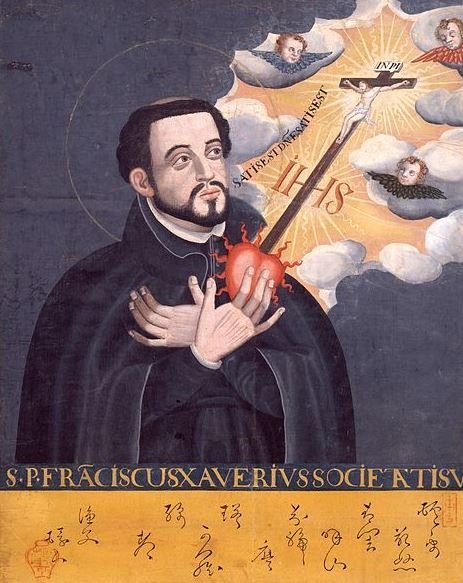
St. Francis Xavier’s life and major accomplishments reflect a remarkable journey of faith, marked by his transformative role as a missionary. Image: A painting depicting Xavier, located at Kobe City Museum in Japan.
India and the Malay Peninsula
Xavier arrived in Goa, India, in 1542. He was appalled by the moral corruption he found among the Portuguese settlers and made it his mission to reform these communities by preaching, ministering to the sick, and teaching children.
For example, Xavier’s efforts in Goa laid the groundwork for a significant Christian community. He then expanded his missionary efforts to the Malay Peninsula and the East Indies, where he worked tirelessly to establish Christian communities, often in the face of significant challenges and opposition.
Japan and Vision for China
In 1549, Xavier embarked on a mission to Japan, landing in Kagoshima. His approach was to adapt Christian teachings to the local culture and language, a strategy that earned him respect and allowed him to make inroads in a complex society wary of foreign influences.
Xavier’s work in Japan set the stage for a century of Christian missionary activity. Although he never entered China, his preparations to evangelize there reflected his visionary approach to missionary work. He saw China as a pivotal region for spreading Christianity further in Asia.
Major Accomplishments
Below are some of the major achievements of St Francis Xavier:
Founding Jesuit Missions
Xavier’s most enduring legacy is his role in founding and expanding Jesuit missions across Asia. His pioneering efforts in India, Japan, and the broader Asian region laid the foundations for subsequent Jesuit missionaries. Xavier’s methodologies, which included learning local languages and customs, significantly influenced missionary work.
Cultural Exchange
Xavier facilitated a cultural exchange between the East and the West. By learning and respecting local languages and traditions, he bridged significant cultural divides, allowing for a more profound exchange of ideas and religious beliefs. His translations of Christian texts into local languages were pivotal in making Christianity accessible to the Asian populace.
Patronage of Missions
Xavier’s work and his correspondence with Europe played a critical role in raising awareness about missionary activities and the need for support. He is considered a patron saint of missions, and his life’s work significantly contributed to the expansion of Christianity in the East.
Spiritual Legacy
Beyond his tangible accomplishments, Xavier’s spiritual legacy is immense. His dedication, humility, and zeal for spreading the Gospel have inspired countless missionaries and laypersons. His letters, filled with profound spiritual insights and reflections on his missionary experiences, continue to be a source of inspiration for many.

St. Francis Xavier’s pioneering efforts in Asia not only contributed significantly to the spread of Christianity but also fostered a unique cultural and religious exchange that bridged the East and the West. Image: A painting, by André Reinoso, portraying Xavier during one of his evangelisms in Goa.
Challenges and Controversies
Xavier’s missionary work was not without its challenges and controversies. His encounters with diverse cultures and religions often put him at odds with local traditions and beliefs.
Moreover, his methodologies and the imposition of Christianity have been critiqued from various perspectives, including colonial and cultural imposition debates.
Despite these controversies, Xavier’s commitment to his faith and his respect for the cultures he worked with have been widely acknowledged.
Canonization and Legacy
Francis Xavier’s death on December 3, 1552, on Shangchuan Island, China, marked the end of an extraordinary life dedicated to missionary work.
He was canonized by Pope Gregory XV on March 12, 1622, alongside Ignatius of Loyola. His feast day is celebrated on December 3.
Xavier’s legacy is not just in the communities he founded or the people he converted but also in the example he set for future generations. His life embodies the Jesuit ideals of service, humility, and a deep commitment to spreading the faith. As a co-founder of the Society of Jesus, his influence extends to the educational and social work carried out by Jesuits worldwide.

Tags: Catholic Missionaries Catholic Saints Christianization of Asia Patron Saint of Missions
Leave a Reply Cancel reply
Your email address will not be published. Required fields are marked *
Save my name, email, and website in this browser for the next time I comment.
- Next story How did Portuguese Catholics benefit from trade in Japan?
- Previous story Buffalo Soldiers: History, Meaning, & Major Facts
- Popular Posts
- Recent Posts

How did Henry VIII’s marriages end?

Constitutional Convention

Slavery in the South: History & Major Facts

Vladimir Lenin: Life, Russian Revolution, & Death

How Did Wu Zetian Come to Power?

Greatest African Leaders of all Time

Queen Elizabeth II: 10 Major Achievements

Donald Trump’s Educational Background

Donald Trump: 10 Most Significant Achievements

8 Most Important Achievements of John F. Kennedy

Odin in Norse Mythology: Origin Story, Meaning and Symbols

Ragnar Lothbrok – History, Facts & Legendary Achievements

9 Great Achievements of Queen Victoria

Most Ruthless African Dictators of All Time

12 Most Influential Presidents of the United States

Greek God Hermes: Myths, Powers and Early Portrayals

Kamala Harris: 10 Major Achievements

Kwame Nkrumah: History, Major Facts & 10 Memorable Achievements

8 Major Achievements of Rosa Parks

How did Captain James Cook die?

Trail of Tears: Story, Death Count & Facts

5 Great Accomplishments of Ancient Greece

10 Most Famous Pharaohs of Egypt

The Exact Relationship between Elizabeth II and Elizabeth I

How and when was Morse Code Invented?
- Adolf Hitler Alexander the Great American Civil War Ancient Egyptian gods Ancient Egyptian religion Apollo Athena Athens Black history Carthage China Civil Rights Movement Cold War Constantine the Great Constantinople Egypt England France Germany Hera Horus India Isis Julius Caesar Loki Medieval History Military Generals Military History Napoleon Bonaparte Nobel Peace Prize Odin Osiris Ottoman Empire Pan-Africanism Queen Elizabeth I Religion Set (Seth) Soviet Union Thor Timeline Turkey Women’s History World War I World War II Zeus
St. Francis XavierPlease help support the mission of New Advent and get the full contents of this website as an instant download. Includes the Catholic Encyclopedia, Church Fathers, Summa, Bible and more — all for only $19.99... Born in the Castle of Xavier near Sanguesa, in Navarre , 7 April, 1506; died on the Island of Sancian near the coast of China , 2 December, 1552. In 1525, having completed a preliminary course of studies in his own country, Francis Xavier went to Paris , where he entered the Collège de Sainte-Barbe. Here he met the Savoyard , Pierre Favre, and a warm personal friendship sprang up between them. It was at this same college that St. Ignatius Loyola , who was already planning the foundation of the Society of Jesus , resided for a time as a guest in 1529. He soon won the confidence of the two young men; first Favre and later Xavier offered themselves with him in the formation of the Society . Four others, Lainez , Salmerón , Rodríguez, and Bobadilla , having joined them, the seven made the famous vow of Montmartre, 15 Aug., 1534. After completing his studies in Paris and filling the post of teacher there for some time, Xavier left the city with his companions 15 November, 1536, and turned his steps to Venice , where he displayed zeal and charity in attending the sick in the hospitals . On 24 June, 1537, he received Holy orders with St. Ignatius . The following year he went to Rome , and after doing apostolic work there for some months, during the spring of 1539 he took part in the conferences which St. Ignatius held with his companions to prepare for the definitive foundation of the Society of Jesus . The order was approved verbally 3 September, and before the written approbation was secured, which was not until a year later, Xavier was appointed, at the earnest solicitation of John III, King of Portugal , to evangelize the people of the East Indies. He left Rome 16 March, 1540, and reached Lisbon about June. Here he remained nine months, giving many admirable examples of apostolic zeal . On 7 April, 1541, he embarked in a sailing vessel for India , and after a tedious and dangerous voyage landed at Goa , 6 May, 1542. The first five months he spent in preaching and ministering to the sick in the hospitals . He would go through the streets ringing a little bell and inviting the children to hear the word of God . When he had gathered a number, he would take them to a certain church and would there explain the catechism to them. About October, 1542, he started for the pearl fisheries of the extreme southern coast of the peninsula, desirous of restoring Christanity which, although introduced years before, had almost disappeared on account of the lack of priests . He devoted almost three years to the work of preaching to the people of Western India , converting many, and reaching in his journeys even the Island of Ceylon. Many were the difficulties and hardships which Xavier had to encounter at this time, sometimes on account of the cruel persecutions which some of the petty kings of the country carried on against the neophytes , and again because the Portuguese soldiers, far from seconding the work of the saint , retarded it by their bad example and vicious habits. In the spring of 1545 Xavier started for Malacca. He laboured there for the last months of that year, and although he reaped an abundant spiritual harvest, he was not able to root out certain abuses, and was conscious that many sinners had resisted his efforts to bring them back to God . About January, 1546, Xavier left Malacca and went to Molucca Islands, where the Portuguese had some settlements, and for a year and a half he preached the Gospel to the inhabitants of Amboyna, Ternate, Baranura, and other lesser islands which it has been difficult to identify. It is claimed by some that during this expedition he landed on the island of Mindanao, and for this reason St. Francis Xavier has been called the first Apostle of the Philippines . But although this statement is made by some writers of the seventeenth century, and in the Bull of canonization issued in 1623, it is said that he preached the Gospel in Mindanao, up to the present time it has not been proved absolutely that St. Francis Xavier ever landed in the Philippines . By July, 1547, he was again in Malacca . Here he met a Japanese called Anger (Han-Sir), from whom he obtained much information about Japan . His zeal was at once aroused by the idea of introducing Christanity into Japan , but for the time being the affairs of the Society demanded his presence at Goa , whither he went, taking Anger with him. During the six years that Xavier had been working among the infidels, other Jesuit missionaries had arrived at Goa , sent from Europe by St. Ignatius ; moreover some who had been born in the country had been received into the Society . In 1548 Xavier sent these missionaries to the principal centres of India , where he had established missions, so that the work might be preserved and continued. He also established a novitiate and house of studies, and having received into the Society Father Cosme de Torres, a Spanish priest whom he had met in the Maluccas, he started with him and Brother Juan Fernández for Japan towards the end of June, 1549. The Japanese Anger, who had been baptized at Goa and given the name of Pablo de Santa Fe, accompanied them. They landed at the city of Kagoshima in Japan , 15 Aug., 1549. The entire first year was devoted to learning the Japanese language and translating into Japanese , with the help of Pablo de Santa Fe, the principal articles of faith and short treatises which were to be employed in preaching and catechizing. When he was able to express himself, Xavier began preaching and made some converts, but these aroused the ill will of the bonzes, who had him banished from the city. Leaving Kagoshima about August, 1550, he penetrated to the centre of Japan , and preached the Gospel in some of the cities of southern Japan . Towards the end of that year he reached Meaco, then the principal city of Japan , but he was unable to make any headway here because of the dissensions then rending the country. He retraced his steps to the centre of Japan , and during 1551 preached in some important cities, forming the nucleus of several Christian communities, which in time increased with extraordinary rapidity. After working about two years and a half in Japan he left this mission in charge of Father Cosme de Torres and Brother Juan Fernández, and returned to Goa , arriving there at the beginning of 1552. Here domestic troubles awaited him. Certain disagreements between the superior who had been left in charge of the missions, and the rector of the college, had to be adjusted. This, however, being arranged, Xavier turned his thoughts to China , and began to plan an expedition there. During his stay in Japan he had heard much of the Celestial Empire , and though he probably had not formed a proper estimate of its extent and greatness, he nevertheless understood how wide a field it afforded for the spread of the light of the Gospel. With the help of friends he arranged a commission or embassy to the Sovereign of China , obtained from the Viceroy of India the appointment of ambassador, and in April, 1552, he left Goa . At Malacca the party encountered difficulties because the influential Portuguese disapproved of the expedition, but Xavier knew how to overcome this opposition, and in the autumn he arrived in a Portuguese vessel at the small island of Sancian near the coast of China . While planning the best means for reaching the mainland, he was taken ill, and as the movement of the vessel seemed to aggravate his condition, he was removed to the land, where a rude hut had been built to shelter him. In these wretched surroundings he breathed his last. It is truly a matter of wonder that one man in the short space of ten years (6 May, 1542 - 2 December, 1552) could have visited so many countries, traversed so many seas, preached the Gospel to so many nations, and converted so many infidels. The incomparable apostolic zeal which animated him, and the stupendous miracles which God wrought through him, explain this marvel, which has no equal elsewhere. The list of the principal miracles may be found in the Bull of canonization . St. Francis Xavier is considered the greatest missionary since the time of the Apostles , and the zeal he displayed, the wonderful miracles he performed, and the great number of souls he brought to the light of true Faith, entitle him to this distinction. He was canonized with St. Ignatius in 1622, although on account of the death of Gregory XV , the Bull of canonization was not published until the following year. The body of the saint is still enshrined at Goa in the church which formerly belonged to the Society . In 1614 by order of Claudius Acquaviva , General of the Society of Jesus , the right arm was severed at the elbow and conveyed to Rome , where the present altar was erected to receive it in the church of the Gesu. About this pageAPA citation. Astrain, A. (1909). St. Francis Xavier. In The Catholic Encyclopedia. New York: Robert Appleton Company. http://www.newadvent.org/cathen/06233b.htm MLA citation. Astrain, Antonio. "St. Francis Xavier." The Catholic Encyclopedia. Vol. 6. New York: Robert Appleton Company, 1909. <http://www.newadvent.org/cathen/06233b.htm>. Transcription. This article was transcribed for New Advent by Mary and Joseph P. Thomas. In memory of Sebastian Poovathumkal. Ecclesiastical approbation. Nihil Obstat. September 1, 1909. Remy Lafort, Censor. Imprimatur. +John M. Farley, Archbishop of New York. Contact information. The editor of New Advent is Kevin Knight. My email address is webmaster at newadvent.org. Regrettably, I can't reply to every letter, but I greatly appreciate your feedback — especially notifications about typographical errors and inappropriate ads.
CONTACT US | ADVERTISE WITH NEW ADVENT
 St. Francis Xavier Feast day: Dec 03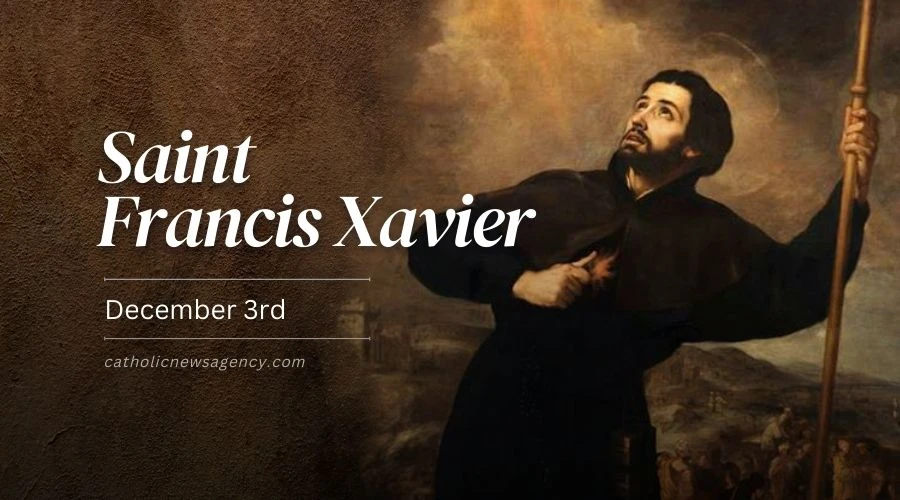 On Dec. 3, the Roman Catholic Church honors St. Francis Xavier, one of the first Jesuits who went on to evangelize vast portions of Asia. Francis Xavier was born during 1506 in the Kingdom of Navarre, a region now divided between Spain and France. His mother was an esteemed heiress, and his father an adviser to King John III. While his brothers entered the military, Francis followed an intellectual path to a college in Paris. There he studied philosophy, and later taught it after earning his masters degree. In Paris, the young man would discover his destiny with the help of his long-time friend Peter Faber, and an older student named Ignatius Loyola – who came to Paris in 1528 to finish a degree, and brought together a group of men looking to glorify God with their lives. At first, personal ambition kept Francis from heeding God's call. Ignatius' humble and austere lifestyle did not appeal to him. But the older student, who had undergone a dramatic conversion, often posed Christ's question to Francis: “What will it profit a man to gain the whole world, and lose his own soul?” Gradually, Ignatius convinced the young man to give up his own plans and open his mind to God's will. In 1534, Francis Xavier, Peter Faber, and four other men joined Ignatius in making a vow of poverty, chastity, and dedication to the spread of the Gospel through personal obedience to the Pope. Francis became a priest in 1537. Three years later, Pope Paul III confirmed Ignatius and his companions as a religious order, the Jesuits. During that year, the king of Portugal asked the Pope to send missionaries to his newly-acquired territories in India. Together with another Jesuit, Simon Rodriguez, Francis first spent time in Portugal caring for the sick and giving instruction in the faith. On his 35th birthday, he set sail for Goa on India's west coast. There, however, he found the Portuguese colonists causing disgrace to the Church through their bad behavior. This situation spurred the Jesuit to action. He spent his days visiting prisoners and the sick, gathering groups of children together to teach them about God, and preaching to both Portuguese and Indians. Adopting the lifestyle of the common people, he lived on rice and water in a hut with a dirt floor. Xavier's missionary efforts among them often succeeded, though he had more difficulty converting the upper classes, and encountered opposition from both Hindus and Muslims. In 1545 he extended his efforts to Malaysia, before moving on to Japan in 1549. Becoming fluent in Japanese, Francis instructed the first generation of Japanese Catholic converts. Many said that they were willing to suffer martyrdom, rather than renounce the faith brought by the far-flung Jesuit. St. Francis Xavier became ill and died on Dec. 3, 1552, while seeking a way to enter the closely-guarded kingdom of China. In 1622, both St. Francis Xavier and St. Ignatius Loyola were canonized on the same day.  Latest news Second round of aid delivered to Gaza by Latin Patriarchate and Order of Malta Bishops Barron and Paprocki stress the importance of ‘inviting Catholics back to Mass’.jpg?w=175&h=100) Priest sues gay hookup app Grindr over data leak Pro-life roundup: Harris pledges to restore Roe v. Wade The best photos from the National Eucharistic Congress Bishop Cozzens on the National Eucharistic Congress: ‘God showed us how good he is’ Lessons from Sts. Anne and Joachim for couples facing infertility 5 keys to better understand the encyclical Humanae Vitae Senate advances bills to protect privacy and safety of children online Young mother gets more than 3 years in prison for blocking abortion clinic entrance
 St. Francis Xavier: A Modern View of his Life and WorkSt. Francis Xavier, one of St. Ignatius Loyola's closest friends and an original founding companion of the Society of Jesus, is most honored by the Catholic Church, other Christian churches, and the Jesuit order for his missionary accomplishments particularly in India, Southeast Asia and Japan. He was born in 1506 in the family castle in the Basque region of northern Spain, the fifth and youngest child of noble, wealthy, and pious parents. To learn more about the life and work of St. Francis Xavier, watch this video written and narrated by Debra K. Mooney, Ph.D.
To provide feedback, please email: [email protected] Jesuitresource.org is developed by The Center for Mission and Identity at Xavier University with support from the Conway Institute for Jesuit Education. Learn more about Jesuit Resource . Stations of the Cross: Every Friday of LentWe ask you, humbly, to help..  St. Francis Xavier
Born in the Castle of Xavier near Sanguesa, in Navarre, 7 April, 1506; died on the Island of Sancian near the coast of China, 2 December, 1552. In 1525, having completed a preliminary course of studies in his own country, Francis Xavier went to Paris, where he entered the collège de Sainte-Barbe. Here he met the Savoyard, Pierre Favre, and a warm personal friendship sprang up between them. It was at this same college that St. Ignatius Loyola, who was already planning the foundation of the Society of Jesus , resided for a time as a guest in 1529. He soon won the confidence of the two young men; first Favre and later Xavier offered themselves with him in the formation of the Society. Four others, Lainez, Salmerón, Rodríguez, and Bobadilla, having joined them, the seven made the famous vow of Montmartre, 15 Aug., 1534. After completing his studies in Paris and filling the post of teacher there for some time, Xavier left the city with his companions 15 November, 1536, and turned his steps to Venice, where he displayed zeal and charity in attending the sick in the hospitals. On 24 June, 1537, he received Holy orders with St. Ignatius. The following year he went to Rome, and after doing apostolic work there for some months, during the spring of 1539 he took part in the conferences which St. Ignatius held with his companions to prepare for the definitive foundation of the Society of Jesus. The order was approved verbally 3 September, and before the written approbation was secured, which was not until a year later, Xavier was appointed, at the earnest solicitation of the John III, King of Portugal, to evangelize the people of the East Indies. He left Rome 16 March, 1540, and reached Lisbon about June. Here he remained nine months, giving many admirable examples of apostolic zeal.  Enjoy Daily Readings? Pay it ForwardOn 7 April, 1541, he embarked in a sailing vessel for India, and after a tedious and dangerous voyage landed at Goa, 6 May, 1542. The first five months he spent in preaching and ministering to the sick in the hospitals. He would go through the streets ringing a little bell and inviting the children to hear the word of God. When he had gathered a number, he would take them to a certain church and would there explain the catechism to them. About October, 1542, he started for the pearl fisheries of the extreme southern coast of the peninsula, desirous of restoring Christanity which, although introduced years before, had almost disappeared on account of the lack of priests. He devoted almost three years to the work of preaching to the people of Western India, converting many, and reaching in his journeys even the Island of Ceylon. Many were the difficulties and hardships which Xavier had to encounter at this time, sometimes on account of the cruel persecutions which some of the petty kings of the country carried on against the neophytes, and again because the Portuguese soldiers, far from seconding the work of the saint, retarded it by their bad example and vicious habits. In the spring of 1545 Xavier started for Malacca. He laboured there for the last months of that year, and although he reaped an abundant spiritual harvest, he was not able to root out certain abuses, and was conscious that many sinners had resisted his efforts to bring them back to God. About January, 1546, Xavier left Malacca and went to Molucca Islands, where the Portuguese had some settlements, and for a year and a half he preached the Gospel to the inhabitants of Amboyna, Ternate, Baranura, and other lesser islands which it has been difficult to identify. It is claimed by some that during this expedition he landed on the island of Mindanao, and for this reason St. Francis Xavier has been called the first Apostle of the Philippines. But although this statement is made by some writers of the seventeenth century, and in the Bull of canonization issued in 1623, it is said that he preached the Gospel in Mindanao, up to the present time it has not been proved absolutely that St. Francis Xavier ever landed in the Philippines. By July, 1547, he was again in Malacca. Here he met a Japanese called Anger (Han-Sir), from whom he obtained much information about Japan. His zeal was at once aroused by the idea of introducing Christanity into Japan, but for the time being the affairs of the Society demanded his presence at goa, whither he went, taking Anger with him. During the six years that Xavier had been working among the infidels, other Jesuit missionaries had arrived at Goa, sent from Europe by St. Ignatius ; moreover some who had been born in the country had been received into the Society. In 1548 Xavier sent these missionaries to the principal centres of India, where he had established missions, so that the work might be preserved and continued. He also established a novitiate and house of studies, and having received into the Society Father Cosme de Torres, a spanish priest whom he had met in the Maluccas, he started with him and Brother Juan Fernández for Japan towards the end of June, 1549. The Japanese Anger, who had been baptized at Goa and given the name of Pablo de Santa Fe, accompanied them.  Download 100's of Prayers for freeThey landed at the city of Kagoshima in Japan, 15 Aug., 1549. The entire first year was devoted to learning the Japanese language and translating into Japanese, with the help of Pablo de Santa Fe, the principal articles of faith and short treatises which were to be employed in preaching and catechizing. When he was able to express himself, Xavier began preaching and made some converts, but these aroused the ill will of the bonzes, who had him banished from the city. Leaving Kagoshima about August, 1550, he penetrated to the centre of Japan, and preached the Gospel in some of the cities of southern Japan. Towards the end of that year he reached Meaco, then the principal city of Japan, but he was unable to make any headway here because of the dissensions the rending the country. He retraced his steps to the centre of Japan, and during 1551 preached in some important cities, forming the nucleus of several Christian communities, which in time increased with extraordinary rapidity. After working about two years and a half in Japan he left this mission in charge of Father Cosme de Torres and Brother Juan Fernández , and returned to Goa, arriving there at the beginning of 1552. Here domestic troubles awaited him. Certain disagreements between the superior who had been left in charge of the missions, and the rector of the college, had to be adjusted. This, however, being arranged, Xavier turned his thoughts to China, and began to plan an expedition there. During his stay in Japan he had heard much of the Celestial Empire, and though he probably had not formed a proper estimate of his extent and greatness, he nevertheless understood how wide a field it afforded for the spread of the light of the Gospel. With the help of friends he arranged a commission or embassy the Sovereign of China, obtained from the Viceroy of India the appointment of ambassador, and in April, 1552, he left Goa. At Malacca the party encountered difficulties because the influential Portuguese disapproved of the expedition, but Xavier knew how to overcome this opposition, and in the autumn he arrived in a Portuguese vessel at the small island of Sancian near the coast of China. While planning the best means for reaching the mainland, he was taken ill, and as the movement of the vessel seemed to aggravate his condition, he was removed to the land, where a rude hut had been built to shelter him. In these wretched surroundings he breathed his last.  Enjoy our RCIA class? Pay it ForwardIt is truly a matter of wonder that one man in the short space of ten years (6 May, 1542 - 2 December, 1552) could have visited so many countries, traversed so many seas, preached the Gospel to so many nations, and converted so many infidels. The incomparable apostolic zeal which animated him, and the stupendous miracles which God wrought through him, explain this marvel, which has no equal elsewhere. The list of the principal miracles may be found in the Bull of canonization. St. Francis Xavier is considered the greatest missionary since the time of the Apostles, and the zeal he displayed, the wonderful miracles he performed, and the great number of souls he brought to the light of true Faith, entitle him to this distinction. He was canonized with St. Ignatius in 1622, although on account of the death of Gregory XV, the Bull of canonization was not published until the following year. The body of the saint is still enshrined at Goa in the church which formerly belonged to the Society. In 1614 by order of Claudius Acquaviva, General of the Society of Jesus, the right arm was severed at the elbow and conveyed to Rome, where the present altar was erected to receive it in the church of the Gesu.  Free Catholic PDF's - Home / Parish / School / Bulletin InsertsBrowse by catholic encyclopedia alphabet.  Shop RosariesJoin the movement when you sign up below, you don't just join an email list - you're joining an entire movement for free world class catholic education.. 
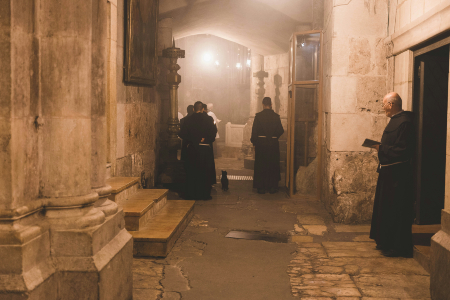 Altar from Christ's Tomb Discovered at Church of the Holy Sepulchre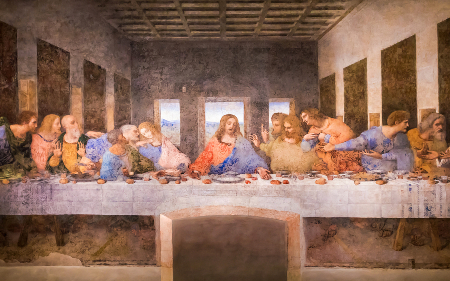 Archaeologists Nearing Discovery of Jesus' Last Supper Room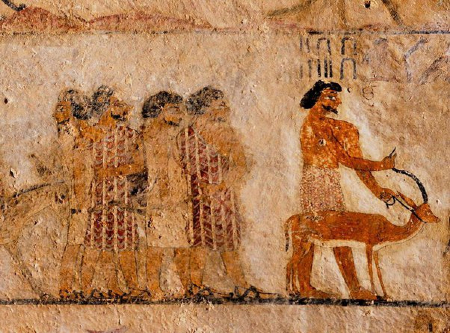 Biblical Lost Alphabet Traced Back to Ancient Canaanite CivilizationWhat are the health benefits of grass-fed beef for your body and mind, rise above poverty is empowering children and families through education and compassion, daily catholic. 
 Enjoy our Confirmation Class? Pay it FowardSaints & angels. 

More of Catholic Online
 St. Benedict Door Hang 15% off
Copyright 2024 Catholic Online. All materials contained on this site, whether written, audible or visual are the exclusive property of Catholic Online and are protected under U.S. and International copyright laws, © Copyright 2024 Catholic Online. Any unauthorized use, without prior written consent of Catholic Online is strictly forbidden and prohibited. Catholic Online is a Project of Your Catholic Voice Foundation, a Not-for-Profit Corporation. Your Catholic Voice Foundation has been granted a recognition of tax exemption under Section 501(c)(3) of the Internal Revenue Code. Federal Tax Identification Number: 81-0596847. Your gift is tax-deductible as allowed by law. We ask you, humbly: do not scroll awayTo all our readers, please don't scroll past this.. Francis Xavier BiographyBirthday: April 7 , 1506 ( Aries ) Born In: Javier, Spain 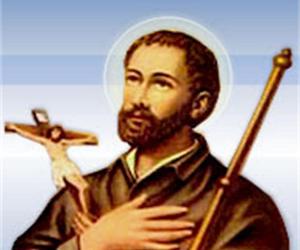 Recommended For You 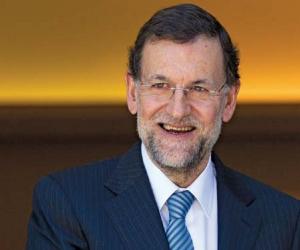 Spanish Celebrities Born In April Also Known As: Saint Francis Xavier, Francisco de Jasso y Azpilicueta Died At Age: 46 father: Juan de Jaso mother: Doña Maria de Azpilcueta y Aznárez Leaders Spanish Men Died on: December 3 , 1552 place of death: Shangchuan Island, Jiangmen, China Notable Alumni: Collège Sainte-Barbe Cause of Death: Fever Founder/Co-Founder: Society of Jesus education: University Of Paris, Collège Sainte-Barbe You wanted to knowWhere did francis xavier travel for his missionary work. Francis Xavier traveled to various countries in Asia, including India, Japan, and Indonesia, to spread Christianity. What is Francis Xavier known for?Francis Xavier is known for being one of the founding members of the Society of Jesus (Jesuits) and for his missionary work in Asia. How did Francis Xavier die?Francis Xavier died on an island near China while on a missionary journey. The exact cause of his death is uncertain, but it is believed to be from a fever. What impact did Francis Xavier have on the spread of Christianity?Francis Xavier played a significant role in expanding Christianity in Asia through his missionary efforts and is credited with converting many people to the faith. What is the significance of Francis Xavier's canonization?Francis Xavier was canonized as a saint by the Catholic Church due to his exemplary life, missionary work, and the miracles attributed to him. Recommended Lists: Francis Xavier was known for his exceptional linguistic skills, being able to speak and write in multiple languages including Portuguese, Spanish, Latin, and several Indian dialects. Despite his noble background and education, Francis Xavier chose to live a simple and humble life, often prioritizing the needs of others over his own comfort. Francis Xavier was a pioneer in intercultural exchange, bridging the gap between East and West through his missionary work in Asia. He was known for his unwavering dedication to his faith and his tireless efforts in spreading Christianity, earning him the title of "Apostle of the Indies." See the events in life of Francis Xavier in Chronological Order  How To Cite People Also Viewed  Also Listed In © Famous People All Rights Reserved
Francis XavierRelated resources for this article.
(1506–52). The Jesuit priest Francis Xavier was a Spanish missionary priest who spent 11 years preaching and teaching in India and Japan. He became known as the Apostle of the Indies and was eventually canonized as a saint of the Roman Catholic church . Francis Xavier was born on April 7, 1506, in the Spanish kingdom of Navarre. He was the youngest son of a noble family. His father was a high government official who lost his post when Spain won possession of Navarre. The boy was first taught by his father’s chaplain, and later he entered the University of Paris. In 1530 he earned the title of magister—similar to a modern doctor of philosophy degree. At about this time Xavier met Ignatius of Loyola . Ignatius often quoted to him Jesus’ saying, “What shall it profit a man if he gain the whole world and lose his own soul?” The words inspired Xavier. In 1534 he joined Ignatius and others in forming the small group that Pope Paul III sanctioned in 1540 as the Society of Jesus, better known as Jesuits ( see Counter-Reformation ). Francis Xavier became a priest in 1537. He studied medicine, cared for the sick in hospitals, and preached wherever people would listen. In 1541 he began his missionary career. He was sent with the rank of papal legate to preach in India. He landed at Goa on the west coast of the subcontinent and preached there for several months, baptizing tens of thousands of people. Then he began a series of journeys that carried him across all of India, the islands along the coast, Malacca, and the Moluccas, or Spice Islands, far to the east. Finally he went to Japan, where he stayed for more than two years. Xavier then made plans to go to China, but he fell ill of fever on the way. He died on December 3, 1552, on the island of Sancian near Canton. He was canonized in 1622 by Pope Gregory XV as St. Francis Xavier, and December 3 was fixed as his feast day. It’s here: the NEW Britannica Kids website!We’ve been busy, working hard to bring you new features and an updated design. We hope you and your family enjoy the NEW Britannica Kids. Take a minute to check out all the enhancements!
Want to see it in action?Start a free trialTo share with more than one person, separate addresses with a comma Choose a language from the menu above to view a computer-translated version of this page. Please note: Text within images is not translated, some features may not work properly after translation, and the translation may not accurately convey the intended meaning. Britannica does not review the converted text. After translating an article, all tools except font up/font down will be disabled. To re-enable the tools or to convert back to English, click "view original" on the Google Translate toolbar.
 Teaching Catholic Kids Family Faith on the Go!
St. Francis Xavier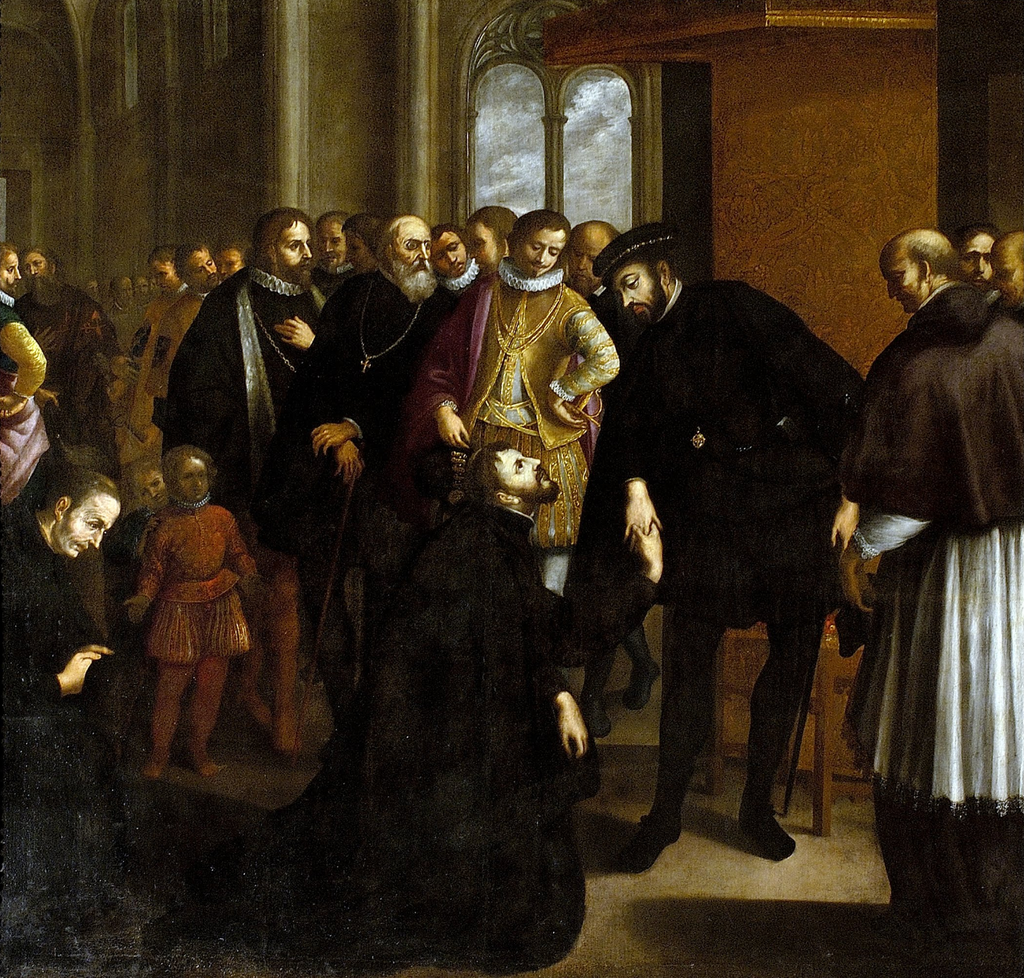 In 1525, when Francis Xavier (baptized Francisco de Jasso y Azpilicueta) left his war-torn home in Navarre (now Spain) for the University of Paris, the young nobleman had great plans for instructing the ignorant … but only in philosophy. 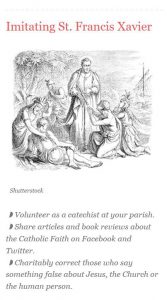 Although his roommate at the university, the future St. Ignatius of Loyola, pleaded with Xavier to consider the priesthood, Francisco ignored him. He had his eye on worldly advancement and wasn’t interested in serving the Church. Eventually, though, Ignatius wore his roommate down, and in 1534, Xavier joined Ignatius and five other students in making secret vows of poverty, chastity and obedience to the pope. Three years later, he was ordained, and in 1540, after the pope approved Ignatius’ plan for a new religious order, Xavier became the first missionary priest of the Society of Jesus (the Jesuits). His first journey was to India, where the king of Portugal needed someone to re-evangelize the Portuguese who had settled in the Near East. Not long after Xavier arrived in Goa, however, he began reaching out to the native people with as much zeal as he reached out to the debauched Portuguese merchants and sailors. Traveling up and down the Pearl Fishery Coast, Xavier instructed the people of southern India and Ceylon in the Christian faith, baptizing thousands and building more than 40 churches. Eventually, Xavier expanded his mission beyond India, traveling throughout Malaysia and Japan before eventually reaching Shangchuan, an island just off the coast of China. Almost everywhere he traveled, Xavier was the first Christian missionary the people had met. Although he struggled with languages, he worked with native interpreters and used both art and culture to introduce thousands to the Gospel. By the time, Francis Xavier died — at age 46, in 1552, on Shangchuan — he had baptized at least 30,000 people. It’s said he was responsible for more conversions to Christianity than any one single person since St. Paul the Apostle. You may also likeWe’re fighting to restore access to 500,000+ books in court this week. Join us! Internet Archive Audio




Search the history of over 866 billion web pages on the Internet. Mobile Apps
Browser ExtensionsArchive-it subscription.
Save Page NowCapture a web page as it appears now for use as a trusted citation in the future. Please enter a valid web address
The Life And Letters Of St. Francis Xavier, Volume 1Bookreader item preview, share or embed this item, flag this item for.
 plus-circle Add Review comment Reviews6,774 Views 42 Favorites DOWNLOAD OPTIONSFor users with print-disabilities IN COLLECTIONSUploaded by Unknown on November 20, 2016 SIMILAR ITEMS (based on metadata)
|
IMAGES
VIDEO
COMMENTS
Summarize this Article St. Francis Xavier (born April 7, 1506, Xavier (Javier) Castle, near Sangüesa, Navarre [Spain]—died December 3, 1552, Sancian [now Shangchuan] Island, China; canonized March 12, 1622; feast day December 3) was the greatest Roman Catholic missionary of modern times who was instrumental in the establishment of Christianity in India, the Malay Archipelago, and Japan.
t. e. Francis Xavier, SJ (born Francisco de Jasso y Azpilicueta; Latin: Franciscus Xaverius; Basque: Frantzisko Xabierkoa; French: François Xavier; Spanish: Francisco Javier; Portuguese: Francisco Xavier; 7 April 1506 - 3 December 1552), venerated as Saint Francis Xavier, was born in [Navarra] Spain [3] [4] Catholic missionary and saint who ...
Name: Francis Xavier. Birth Year: 1506. Birth date: April 7, 1506. Birth City: Xavier Castle, near Sangüesa, Navarre. Birth Country: Spain. Gender: Male. Best Known For: The patron saint of ...
Francis Xavier. Saint. Death:12/03/1552. Nationality (place of birth):Spain. Francis Xavier (Francisco de Jassu y Javier, 1506-1552), was the first Jesuit missionary and the prototype who inspired many men to enter the Society of Jesus and evangelize far off nations. One of the original group of seven men who founded the Jesuits, he was sent to ...
Born in the Castle of Xavier near Sanguesa, in Navarre, 7 April, 1506; died on the Island of Sancian near the coast of China, 2 December, 1552. In 1525, having completed a preliminary course of studies in his own country, Francis Xavier went to Paris, where he entered the college de Sainte-Barbe. Here he met the Savoyard, Pierre Favre, and a ...
Francis Xavier gave his to others. Saint Francis Xavier is a Patron Saint of: Includes Saint of the Day, Minute Meditations, and Pause + Pray. Saint Francis Xavier was won over to Christ by the gentle persuasion of Saint Ignatius of Loyola. He then joined the Jesuits and soon after set off for the East, where he labored the rest of his life.
Francis Xavier: His Life, His Times, 4 vols., by Georg Schurhammer (Rome, 1973 - 1982) is the definitive biography by the leading authority on Xavier, the result of decades of study. Schurhammer's Saint Francis Xavier : The Apostle of India and Japan ( Saint Louis , Mo., 1928) and Margaret Yeo's Saint Francis Xavier: Apostle of the East ( New ...
In 1525, Francis left Xavier, his mother's castle near Pamplona in Navarre, to study at the University of Paris. He enrolled at the College of St. Barbara, where he pursued an unwaveringly successful academic career. Within three short years he had earned his degree and was lecturing in philosophy. At St. Barbara, circumstances put Xavier's ...
St. Francis Xavier The Spanish Jesuit St. Francis Xavier (1506-1552) was a pioneer of Catholic missions in eastern Asia. Known as the Apostle of the East Indies, he has been acclaimed as one of the greatest missionaries in history.. Francis Xavier was born Francisco de Jasso y Xavier of a noble family of Basque stock on April 7, 1506.
Saint Francis Xavier, (born April 7, 1506, Xavier Castle, near Sangüesa, Navarre—died Dec. 3, 1552, Sancian Island, China; canonized March 12, 1622; feast day December 3), Spanish-born French missionary to the Far East.Born into a noble Basque family, he was educated at the University of Paris, where he met Ignatius of Loyola and became one of the first seven members of the Jesuits.
St. Francis Xavier, one of St. Ignatius Loyola's closest friends and an original founding companion of the Society of Jesus, is most honored by the Catholic Church, other Christian churches, and the Jesuit order for his missionary accomplishments particularly in India, Southeast Asia and Japan. He was born in 1506 in the family castle in the ...
Francis Xavier's death on December 3, 1552, on Shangchuan Island, China, marked the end of an extraordinary life dedicated to missionary work. He was canonized by Pope Gregory XV on March 12, 1622, alongside Ignatius of Loyola. His feast day is celebrated on December 3. Xavier's legacy is not just in the communities he founded or the people ...
Born in the Castle of Xavier near Sanguesa, in Navarre, 7 April, 1506; died on the Island of Sancian near the coast of China, 2 December, 1552. In 1525, having completed a preliminary course of studies in his own country, Francis Xavier went to Paris, where he entered the Collège de Sainte-Barbe. Here he met the Savoyard, Pierre Favre, and a ...
St. Francis Xavier was a Navarrese-Basque Roman Catholic missionary born in the Kingdom of Navarre on April 7, 1506. His father was a privy counselor and finance minister to King John III of Navarre. He was the youngest in his family and resided in a castle which still partially stands today and is in the possession of the Jesuit order.
St. Francis Xavier. On Dec. 3, the Roman Catholic Church honors St. Francis Xavier, one of the first Jesuits who went on to evangelize vast portions of Asia. Francis Xavier was born during 1506 in ...
Francis Xavier was one of the first companions and founders of the Society of Jesus. He became a close friend of Ignatius Loyola at the University of Paris. Xavier came to share Ignatius' vision through making the Spiritual Exercises, and realized that vision through missionary labors in India, Indonesian archipelago and Japan. He was the first Jesuit to go out to people of non-European culture.
St. Francis Xavier, one of St. Ignatius Loyola's closest friends and an original founding companion of the Society of Jesus, is most honored by the Catholic Church, other Christian churches, and the Jesuit order for his missionary accomplishments particularly in India, Southeast Asia and Japan. He was born in 1506 in the family castle in the Basque region of northern Spain, the fifth and ...
St. Francis Xavier. Born in the Castle of Xavier near Sanguesa, in Navarre, 7 April, 1506; died on the Island of Sancian near the coast of China, 2 December, 1552. In 1525, having completed a preliminary course of studies in his own country, Francis Xavier went to Paris, where he entered the collège de Sainte-Barbe.
Francis Xavier was born on April 7, 1506 at the castle of Xavier in the Kingdom of Navarre, to Juan de Jasso y Atondo and Dona Maria de Azpilcueta y Aznarez. The family was one of the most prosperous in the kingdom. Francis Xavier's father died in 1515, and Francis was taught by his mother and a parish priest in his early years.
Francis Xavier. (1506-52). The Jesuit priest Francis Xavier was a Spanish missionary priest who spent 11 years preaching and teaching in India and Japan. He became known as the Apostle of the Indies and was eventually canonized as a saint of the Roman Catholic church. Francis Xavier was born on April 7, 1506, in the Spanish kingdom of Navarre.
Almost everywhere he traveled, Xavier was the first Christian missionary the people had met. Although he struggled with languages, he worked with native interpreters and used both art and culture to introduce thousands to the Gospel. By the time, Francis Xavier died — at age 46, in 1552, on Shangchuan — he had baptized at least 30,000 people.
CONTENTS BOOK I. FROM THE BIRTH OF FRANCIS TO HIS SAILING FOR INDIA. 1506-1541. CHAPTER I. FRANCIS XAVIER AT THE UNIVERSITY OF PARIS. Manifold diversity of vocations 1 Importance of the old Universities 2 Universities and religious movements 3 Ignatius at Paris 4 His attraction to great cities 5 Acquaintance with Francis Xavier 7 Pierre Leftvre 8 Parentage and early life of Francis Xavier 9 ...
Francis Xavier Biography. Saint Francis Xavier (April 7, 1506 - December 2, 1552) was a pioneering Christian missionary and co-founder of the Society of Jesus (Jesuit Order). The Xaverian Brothers are named after him. The Catholic church considers him to have converted more people to Christianity then anyone else since St. Paul. Xavier was born ...